Fear Free Exam Rooms
Dr. Julie Reck, Veterinary Medical Center, Fort Mill, SC
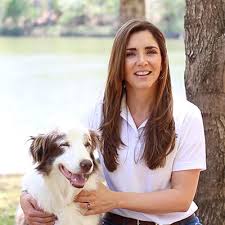 Veterinarian Dr. Julie Reck says that turning her office into a Fear Free certified clinic helped her to practice better medicine. She opened her clinic in 2011 and now she has a bustling practice with four vets and a new attitude. The pets are the big benefactors.
Veterinarian Dr. Julie Reck says that turning her office into a Fear Free certified clinic helped her to practice better medicine. She opened her clinic in 2011 and now she has a bustling practice with four vets and a new attitude. The pets are the big benefactors.
As her practice grew, Dr. Reck also wanted to cultivate the type of medicine and services that were offered. She worked hard to become AAHA (American Animal Hospital Association) Certified, which is a voluntary action in veterinary medicine.
However, when the Fear Free Movement emerged onto the scene in veterinary medicine, she was really quick to see that this was a direction that the veterinary profession needed to head in. She quickly got eighteen people, everyone who is involved in handling animals in her office, Fear Free Certified. She is very proud to have achieved that. Now they are all getting ready to work on their level two certifications and get the practice officially Fear Free Certified when that launches in 2018.
Dr. Reck now has 'fear free exam rooms' in her office. So what does that mean? She tells us it's all about setting the stage for an excellent experience; not only for pets, but also for their clients.
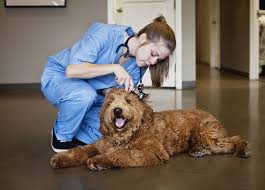 It goes back to really good communication leading up to the appointment. So they go over important things like the benefit of bringing a stool sample in with each appointment. They may or may not use it, but now they don't have to be invasive and retrieve that from an animal. That's one very negative experience that they don't have to have every single time they visit the vet. So they certainly appreciate it.
It goes back to really good communication leading up to the appointment. So they go over important things like the benefit of bringing a stool sample in with each appointment. They may or may not use it, but now they don't have to be invasive and retrieve that from an animal. That's one very negative experience that they don't have to have every single time they visit the vet. So they certainly appreciate it.
Also, when an animal comes into their practice, they have their lobby and exam rooms full of what are called pheromones. These are little diffusers that they plug in. Dogs and cats have their own specific calming pheromones and receptors that are unique to each species.
Cats can't smell the dog ones dogs can't smell the cat ones. Humans can't smell either one. These oftentimes have an immediate calming effect on their patients. They also have either bandanas for dogs or towels for cats that are infused with pheromones as well as calming scents like lavender, or chamomile essential oils that clients can pick from.
They put a bandanna right on the dogs they as soon as they arrive. So they're not only getting the layering of pheromones, they also get the pheromones dissipated through the air in the exam room and wearing that on the bandanas. For cats they have the pheromones on a towel. When they open up the carrier door, the towel also has catnip on it.
The other aspect of a fear for exam room is that they do very little of their exams actually on an exam table. Both Dr. Reck and her staff members actually get down on the ground with their patients. That's where they're most comfortable. Sometimes Dr. Reck has even examined pets in her client's laps or on the bench sitting next to a client. So ultimately the other big aspect of a Fear Free Exam Room is that the pet gets to choose where they're getting examined and what they're comfortable with.
 When Dr. Reck learned about Fear Free last year, she made a decision that this would be a great thing for everyone in her practice to get some additional training on. She really just thought they were all going to go through these 10 modules and get on the same page with animal handling. It would be a little extra investment in all of their individual training and that would be fantastic. However, she said she really underestimated the fact that she was going to be embarking on massive organizational changes in her practice and what turned out to be organizational change in the best direction possible.
When Dr. Reck learned about Fear Free last year, she made a decision that this would be a great thing for everyone in her practice to get some additional training on. She really just thought they were all going to go through these 10 modules and get on the same page with animal handling. It would be a little extra investment in all of their individual training and that would be fantastic. However, she said she really underestimated the fact that she was going to be embarking on massive organizational changes in her practice and what turned out to be organizational change in the best direction possible.
It's also really completely changed the culture of her practice. The veterinary field is hard. They suffer from compassion fatigue and burnout, which can have a negative undertone. They're always looking for ways in this profession to combat that. And what was so surprising was that she really embarked on her Fear Free journey for the obvious pet benefit. However, she had no idea that it was actually going to benefit them as professionals, make them fall in love with their jobs more, make them feel more fulfilled and more rewarded and have a positive impact in their practice. Ultimately to Dr. Reck, the real gem of Fear Free is not just what it can give their patients but what it can give them as professionals.
Visit Fear Free Happy Homes for tips on making your home fear free and to locate a Fear Free Veterinarian near you. Go to Fear Free Pets to become certified.
Listen and Explore the Fear Free Expert Series
Catcade
Christopher Gutierrez
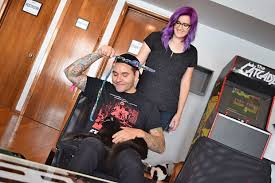 Christopher Gutierrez decided to create a cat café in Chicago. Not just any regular cat cafe though. He filled it with video and arcade games. He said the niche is working. His mission is to rescue cats from life-threatening situations and find quality homes through his adoption program.
Christopher Gutierrez decided to create a cat café in Chicago. Not just any regular cat cafe though. He filled it with video and arcade games. He said the niche is working. His mission is to rescue cats from life-threatening situations and find quality homes through his adoption program.
Christopher Gutierrez is the co-founder of Catcade; along with Shelly Casey; of Chicago's first ever cat cafe, which opened on August 19th. Catcade is a video game themed cat cafe and rescue lounge. They combine the elements of having a cat adoption center a cafe and a lounge. They are themselves a nonprofit cat rescue.
Christopher and Shelly decided to start Catcade together after traveling the world and going to several different cat cafes and rescues on five different continents over the course of years. They were frustrated that Chicago didn't have one. So they decided to start their own. Through the grace and generosity of many donors, they were able to open their doors in August. To this date, they have saved almost 100 animals in three months.
Christopher explains that there's a lot of things that have themes these days and they wanted to set themselves apart, which is what they do as just as people in general anyway. Shelly and Christopher both were kind of the oddballs and the weirdos and were never chosen first for the kickball team in school. They wanted to do something that was a little bit different and appeal to a different demographic. So they came up with the idea of making their cat cafe an arcade-game theme. Christopher even turned some of the arcade games into cat beds. They know their cafe is a shtick, but the more bodies that come through the door the more animals they can save.
If you're going out with four friends one night, says Christopher, and three of them want to go to the cat cafe and one doesn't, well guess what, there's something for that person who doesn't want to be there to do. They can play Ms. Pac-Man, they can play Galaga and they can play Asteroids all at no charge. Catcade also shows movies. Basically they're set up in a way for it to feel like you're hanging out in someone's living room.
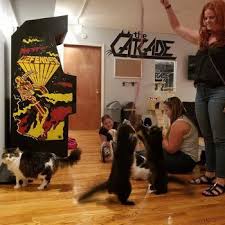 Where did the cats come from? Catcade gets them from all over the place and they don't discriminate from wherever they need help. They pull cats everywhere from Chicago all the way down to Texas for the Hurricane Irma cats. They've also taken in cats from Southern Indiana, Hazard County in Kentucky and Northern Alabama. So they have cats from all over the United States.
Where did the cats come from? Catcade gets them from all over the place and they don't discriminate from wherever they need help. They pull cats everywhere from Chicago all the way down to Texas for the Hurricane Irma cats. They've also taken in cats from Southern Indiana, Hazard County in Kentucky and Northern Alabama. So they have cats from all over the United States.
It's awesome to see a guy that likes cats, but what Christopher didn't realize is when he got involved in the rescue community is how few guys there are involved in this. Catcade has partnered with another shelter, who are basically their mentors called Felines and Canines. This organization is doing amazing work, especially with FIV cats, but they basically said Christopher was going to stick out like a sore thumb. He didn't understand why, but they said it was because he was a guy and a guy covered in tattoos. Of course this leads everyone to mentioning Jackson Galaxy, who is a cat expert covered in tattoos, who just loves his cats!
Catcade's initial startup was done by crowdfunding. They used Indiegogo and through them, as well as private contributions, they raised almost $30,000. They understood that the location was going to be everything, as they needed both foot traffic and visibility. They ended up finding an amazing space after six months of looking every single day. It's in the heart of Chicago in the Lakeview neighborhood, right on the main strip. It's a great wonderful location for them. They opened their with the donations and now charge $15 an hour per person to hang out in their lounge. That dollar amount tends to be high for some places, but tends to be low compared to other places. But basically that is the lowest amount that they've realized that they can charge in order to keep their doors open, continue to saving animals and maybe buying a pizza for one of them every now and then. It's a labor of love and they don't get huge donations like other shelters. They survive on $15 increments.
The lounge where the cats live is about 600 square feet and so they have anywhere from, depending on our adoption rate, at around low 20s. Catcade becomes the home for these cats, where they will live on the premises 24/7 forever or until they are adopted.
Visit Website
Massaging Your Pets
Tracy Vroom, Craniosacral Therapist
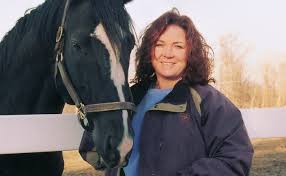 Craniosacral Therapist Tracy Vroom works hard to help animals feel better through massage. As an instructor at the Rocky Mountain School of Animal Acupressure and Massage, she's sharing what she knows about her healing touch. She'll get us started with massage techniques for our pets.
Craniosacral Therapist Tracy Vroom works hard to help animals feel better through massage. As an instructor at the Rocky Mountain School of Animal Acupressure and Massage, she's sharing what she knows about her healing touch. She'll get us started with massage techniques for our pets.
So what is a craniosacral therapist? Tracy explains it's a type of bodywork and energy work that is applied to the animals she works with. She works with them to work with the nervous system and find patterns in the body that are limiting their health or causing challenges with their health. It's a very light palpation, but it's a beautiful gentle technique. And the animals seem to just love it.
Tracy uses this technique on dogs and cats, horses, just about everybody. However, keep in mind that with any technique you could potentially do harm. But when she's teaching students, she talks a lot about being mindful. The first thing you want to do when massaging an animal is to make sure the cat or the dog whatever animal you're working with is interested. They're interested in a massage; they're saying yes that's great. It's like asking permission. Tracy starts out by doing a couple test massages with her flat hand. She starts at the head and runs her hand down the back of the animal. If the animal says yes, this seems interesting; then she can start to go into deeper longer massage. But if they say no and they walk away, then we let it go. The first step is just engaging the animal and making sure they're interested.
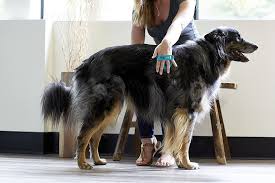 There are certain areas of an animal's body that you should stay away from. Tracy tries not to use a lot of pressure on the legs or the areas or the muzzle where you're over their teeth. Basically stay away from any sensitive area where it's close to the bones or close to the surface of the spine. She doesn't massage the spine area. She massages the big muscles on the legs, the neck and even the top of the head. These are all fine, but she says to avoid the areas where it would feel too poky or uncomfortable.
There are certain areas of an animal's body that you should stay away from. Tracy tries not to use a lot of pressure on the legs or the areas or the muzzle where you're over their teeth. Basically stay away from any sensitive area where it's close to the bones or close to the surface of the spine. She doesn't massage the spine area. She massages the big muscles on the legs, the neck and even the top of the head. These are all fine, but she says to avoid the areas where it would feel too poky or uncomfortable.
You should also be cautious when massaging an older animal. At the Rocky Mountain School of Animal Acupressure and Massage, they have a class geared general massage. They also have classes on working with athlete. So an athletic massage would be very different than a senior massage. They also have classes for working with seniors. They are really cautious if a senior animal has any joint or hip pain, that they are really gentle over the joints. This can be hugely beneficial for animals with degenerative joint disease, like arthritis, to keep that joint a little suppler. So if you can go over those areas where they kind of say "ouch," you'll know because you'll see them kind of hold their breath or their eyes will get a little hard, or they'll close their eyes even, to say, "Ah, I don't know about that, just do it softer in those areas.
Dr. Debbie tells us that she tries to do a monthly massage on her dogs. She finds this very intriguing, but thinks it's just not really well recognized and studied as potentially an alternative therapy that can be brought into veterinary care. She likes using this type of therapy along with other traditional scientific approaches to chronic disease and illness.
 Therapy has been used in humans for a very long time and there are many studies out there about the compression that happens in the skull. There is a space between the plates of the bones of the skull and when those are not moving freely, there are emotional issues and physical issues. There's a science behind it. It restricts their spinal fluid from feeding the nervous system. So there is a true science behind the work. However, Tracy feels that a lot of people are put when the word "energy" comes in and all of a sudden they're not interested.
Therapy has been used in humans for a very long time and there are many studies out there about the compression that happens in the skull. There is a space between the plates of the bones of the skull and when those are not moving freely, there are emotional issues and physical issues. There's a science behind it. It restricts their spinal fluid from feeding the nervous system. So there is a true science behind the work. However, Tracy feels that a lot of people are put when the word "energy" comes in and all of a sudden they're not interested.
Dr. Debbie explains that cats are little stress monsters sometimes. They can have chronic bladder problems and people may mistakenly treat them for bladder infections, when they actually have excessive stress in their life. She feels that addressing this component can be really life changing for a lot of paths if they can get that care that they need.
If you don't have a lot of time, just think about it in terms of taking five to ten minutes to do a little a little massage. Tracy has been working with Petwell for the last couple months talking about the massages that they've created to make it a little easier for people to work with their pets. They have developed a line of products with instructions on the packaging. They say to just take five minutes and use the roller tool on the back and neck of your pet and see what happens.
Visit Website
 Dizzy Old Dogs - Diagnosing Idiopathic Vestibular Disease -Dr. Debbie
Dizzy Old Dogs - Diagnosing Idiopathic Vestibular Disease -Dr. Debbie
I came running when I heard the crashing paw steps of my 12 year old Labrador, Magnum as he flopped and tumbled in a nervous frenzy. With head crooked to the right, Magnum's dizzy, wobbly movements resembled a carnival lover's exit from the tilt-a-whirl ride. His eyes darted back in forth in an uncontrollable movement. Many might assume Magnum suffered a stroke, and figured it was time to put the old guy to sleep. But fortunately there was hope - Magnum developed a typical case of Idiopathic Vestibular Disease.
What is Idiopathic Vestibular Disease?
Idiopathic Vestibular Disease, also known as Old Dog Vestibular Disease, is a condition commonly diagnosed in senior dogs, but also seen in cats. The term idiopathic basically means the cause is unknown. This condition affects the vestibular system and the pet's sense of balance, typically with a rapid onset of symptoms. In Magnum's case he literally was fine at the start of a television program, and was wobbly just one hour later.
Symptoms of Old Dog Vestibular Syndrome include a wobbly gait, head tilt, anxiety, panting, and an abnormal eye movement called nystagmus, a condition in which the eyes dart rapidly back-and-forth or up-and-down. In addition to mobility problems, the topsy-turvy sensation leads to nausea, vomiting, and an inability to eat or drink. Thankfully my sturdy stomached Labrador barely missed a meal during his bout.
The cause of idiopathic vestibular vestibular syndrome isn't completely known, but fortunately most dogs recovery from symptoms within 2 to 4 weeks. In some cases dogs may suffer from future bouts months to years later. Some dogs may retain a slight head tilt or unsteadiness at times.
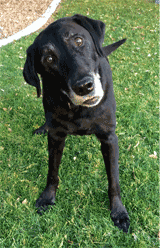 What Can Be Done?
What Can Be Done?
A veterinary examination is important to identify suspected cases of vestibular disease. Other possible causes of these symptoms could include an infectious or inflammatory condition, inner ear infection, cancer, or a brain vascular episode - a stroke-like episode. In order to rule out these potential causes, more detailed testing is needed and may include tests like a CT, MRI, and CSF tap.
There isn't a cure for a vestibular episode, and some pets recover without any treatment. But other animals require supportive care including anti-nausea medications, intravenous fluid therapy, hand feeding, and physical assistance to walk and protect from household hazards.
Caring for a frightened, disoriented, wobbly, nauseated dog can be difficult. My 80 pound Labrador needed physical support to get up, walk outside and required hand feeding at times. He couldn't be left home alone without risk of injury. And because of all the hoisting, blocking collisions with furniture, and guiding away from the depths of the pool, I injured my back during his rehab time. The reality is that home care of a small or toy breed with vestibular disease is much easier than the physical demands of a assisting a large or giant breed dog.
Lessons Learned
I have seen many a patient come to my veterinary office for euthanasia after developing similar vestibular symptoms. Some pet owners assume that the severe symptoms and rapid onset mean that there is no hope and euthanasia is the only choice. I'll admit that vestibular symptoms are scary and affected pets are tough to care for at home, but if given the tincture of time, many senior dogs will eventually improve. Perhaps Magnum's story will help other pet owner's opt to pursue treatment or testing, and give time a chance to heal.
Four weeks later and Magnum is back to playing with toys and energetically bounding on walks. He still retains a slight head tilt to the right, his badge of courage as I see it. I'm thankful for his recovery and adore his charming, lovable tilted perspective of the world.
Featured veterinarian known as "Dr. Debbie" on national pet radio program, Animal Radio. Ebook author of "Yorkshire Terriers: How to Be Your Dog's Best Friend"; "Pugs: How to Be Your Dog's Best Friend"; "Mini Schnauzers: How to Be Your Dog's Best Friend"; and "Shih Tzu: How to Be Your Dog's Best Friend."
Visit Website
5 Must Give, Low Cost, Gifts For Your Pets
Robert Semrow, Listomania
 The holidays are here and you are scrambling to find the perfect gift for everyone on your list. Even Santa is feeling the pressure to deliver. Since you don't have the luxury of elves, I thought I would help my Animal Radio friends out with some advice that I learned over the years from my friends at the North Pole. There is nothing more expensive and treasured more than time. So know that these are must give gifts that will have a big payoff with your pets.
The holidays are here and you are scrambling to find the perfect gift for everyone on your list. Even Santa is feeling the pressure to deliver. Since you don't have the luxury of elves, I thought I would help my Animal Radio friends out with some advice that I learned over the years from my friends at the North Pole. There is nothing more expensive and treasured more than time. So know that these are must give gifts that will have a big payoff with your pets.
Let's begin with socks. Socks are not just for feet they are also for making play toys for dogs and cats who can be entertained and energized just by playing with a sock. We all have a missing match for a sock, or twelve, as we know the sock goblins always seem to grab one or two when we do laundry. Or maybe it's our beloved pets saying that they would like a new sock toy created with care and love by someone they love. So, a DIY sock toy for your pet should be on your list this year.
Next, a homemade treat baked made by you is a great way to treat your pet this year. I'm putting this in the no cost category, because it's very likely that you have the ingredients in your kitchen to make a simple, but enjoyable treat for your cat or dog. It doesn't take a lot of ingredients, time or money to create a treat that will warm your heart and fill their belly. Remember, there are a lot of easy recipes on YouTube that you can get inspired by. I even have YouTube channel with many recipes for homemade pet treats.
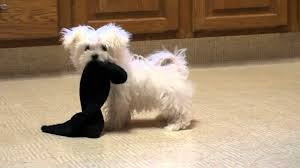 Next up, cardboard boxes are more than something to put your gifts in. In fact, cats, birds, dogs and more often find a box very entertaining. Want to add a little excitement for them, add a treat or twenty inside and you will see a motivated pet go to work with joy and excitement over this simple and easy to make gift. This is the definition of the simple things are sometimes the best.
Next up, cardboard boxes are more than something to put your gifts in. In fact, cats, birds, dogs and more often find a box very entertaining. Want to add a little excitement for them, add a treat or twenty inside and you will see a motivated pet go to work with joy and excitement over this simple and easy to make gift. This is the definition of the simple things are sometimes the best.
Okay, this next one is one that always get's an awe moment from those who hear the story and an all right from those receiving the gift. It's the t-shirt pillow/bed/window rest. It's as simple as it sounds. You are going to take a few of your older, ready to be retired t-shirts and stuff them in to an older pillow case or even one of the other t-shirts. Seal the ends with a little bit of sewing or tie them off if you can't sew. Your pets will love this because it is a part of you that they are getting, literally. These retired shirts have memories and smells that are uniquely yours and your pet will cherish it.
 Finally, the number one no-cost gift that you can, should and must give your pet is time with you. Your pet needs this and so do you. You are a family and at this time of year, family is what matters most. Play a game of hide and seek, fetch or even just snuggle up and watch your favorite holiday special with them on your lap or in your arms.
Finally, the number one no-cost gift that you can, should and must give your pet is time with you. Your pet needs this and so do you. You are a family and at this time of year, family is what matters most. Play a game of hide and seek, fetch or even just snuggle up and watch your favorite holiday special with them on your lap or in your arms.
The holidays are meant for creating memories that last even especially with your pets
Share your low cost, must give pet gift suggestions on our Animal Radio Facebook Page.
Visit Website
Animal Radio News - Lori Brooks
 Do Dogs Go To Heaven?
Do Dogs Go To Heaven?
Yes, all dogs go to heaven. But what you do with their earthly bodies is up to you and now you have options. There is cremation, burial at a pet cemetery and even taxidermy. You can also turn their ashes into synthetic diamonds, which is pretty expensive and starts at about $2,500 for the smallest size diamond. However, there is another option and gardeners and environmentalists you love this. Now you can have your pet composted by a company called Rooted Pet in Washington State. They allow the pet to decompose in a mixture of organic matter, which uses less energy than firing up a cremation oven and requires less land than a graveyard. It's kind of like a dust-to-dust returning to the earth truly! However, it's not a new idea. It is the same method many farms use to dispose of dead livestock and it's how some states now deal with road kill. Here's how Rooted Pet does it, and believe it or not, the process is done indoors. First, a carcass is placed in a boxlike "pod" containing wood chips and other organic matter. Then, just 6 to 8 weeks later it has turned into rich compost, which they say looks and smells like any compost you would use in a garden. Once your pet becomes compost, you don't have to take the compost. The company will use it on its farm or on a tree-planting project. They can even send you a houseplant growing in your pet's compost. Right now they only take pets that weigh up to 50 pounds, but of course they're looking to expand. The cost is about $200 for pets between 21 and 50 pounds, and for smaller animals like birds and fish up to 5 pounds, its $149.
 SMART (Specialized Mobile Animal Rescue Team)
SMART (Specialized Mobile Animal Rescue Team)
There are benefits to living a big city. In Los Angeles, one of those perks is having access to SMART, the city's Specialized Mobile Animal Rescue Team, which last week pulled a pet cat from a 100-foot cliff. That rescue, like all the others, was a success. The specialized unit, with only 11 members, has a 100-percent save rate. Another recent rescue had 2 of the team rappelling down the side of a 5-story building to recover a pet chameleon, who had been lost for 5 days. SMART started in 2004 when members took their first rappelling classes at a local sporting goods store.
Dog Owners Are Healthier
There are literally thousands of studies saying pets are good for your health but this latest one has a lot of people talking. This research was 12 years in the making, studying 3.4 million people, and found that adult dog owners are less likely to die than their non-dog owning peers. (Such long lasting research into so many people is very hard to come by.) Researchers started following the 3.4 million people in 2001 and selected a group where no participants had pre-existing heart conditions. After 12 years, they found that people with dogs had a 23-percent reduced risk of death from cardiac diseases like heart failure, stroke or heart attack than their dog-less peers. Dog owners were also 20-percent less likely to die. If you're a single dog-owner, the news is even better: The study found that people who live on their own with a dog had a 33-percent reduced risk of death compared to their non-dog-owning single counterparts. Why? Single dog-owners were shown to walk their dog more often than individuals in multiple-person households, where that dog-walking chore is usually spread among multiple people. But not all dog breeds "protected" their owners equally, according to the study. Owners of hunting-breed dogs had some of the lowest risk of developing cardiovascular diseases and death. People with pointer dogs, for example, were 40-percent less likely to die, and people with retrievers were 26-percent less likely. Overall, the study in Sweden backs up a similar finding that the American Heart Association reported in 2013. The AHA said dog owners get more exercise, have better blood pressure and cholesterol levels and even have "diminished sympathetic responses" to stress.
 Emotional Support Squirrel Faces Eviction
Emotional Support Squirrel Faces Eviction
A man in Florida is facing eviction from his condo because he refuses to part with his ESA, or emotional support animal, which in this case is a squirrel. The man says he rescued the female squirrel, now named Brutus, shortly after Hurricane Matthew last year. He says she's just like a cat who hides nuts (pecans and hazelnuts are her favorites). He even has the required doctor's note saying he suffers from anxiety related to a car accident more than ten years ago. Nevertheless, the condo association has given him one month to find a new home for Brutus.
Grant Allows Studying of Feline Illnesses
New studies of three deadly infections that attack cats, especially those in shelters were infectious diseases spread so fast, will now be researched extensively thanks to more than $400,000 in grants from Morris Animal Foundation. With more than 85 million pet cats in the country this is huge news. Among the feline illnesses to be studied are feline panleukopenia (also called feline distemper), which is a severe and often fatal gastrointestinal infection in cats and feline herpesvirus type 1, which causes approximately 50-percent of diagnosed viral upper respiratory tract infections in cats. This also spreads like wild fire in multi-cat environments like shelters. The grants will also help develop new tests for FIP, or feline infectious peritonitis, a highly fatal viral disease with no known cure. Researchers will now investigate ways to diagnose and predict the likelihood of a cat to develop FIP.
 Certified Therapy Dog Has Four Prosthetic Legs
Certified Therapy Dog Has Four Prosthetic Legs
Chi Chi, a three-year-old golden retriever who lives in Arizona, has become a certified therapy dog. However, Chi Chi is an extraordinary dog who has survived the South Korean meat industry. Chi Chi was saved and flown to Los Angeles where all four of her legs had to be amputated after she was found in a garbage can, inside a trash bag. Now, Chi Chi has four prosthetic legs and spends her time visiting a veteran's center, an assisted-living facility and special-needs students at an elementary school. She has an incredible story and if you would like to follow along, Chi Chi has pages on both Facebook and Instagram with about 45,000 followers.
 Listen to the entire Podcast of this show (#939)
Listen to the entire Podcast of this show (#939)





